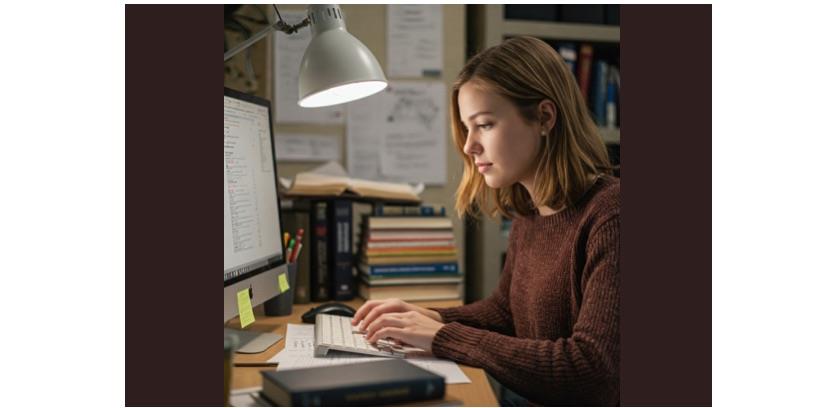
In today's digital age, the ease of accessing and copying information online presents a significant challenge to academic integrity. Plagiarism, the act of presenting someone else's work as your own, has become a persistent concern for educators. While discussions around preventing plagiarism often focus on sophisticated detection software and stricter penalties, a seemingly unrelated skill – touch typing – might hold a surprising key to fostering originality in student work.
At first glance, the ability to type without looking at the keyboard appears purely practical, as it enhances speed and efficiency. However, the cognitive processes involved in touch typing can subtly yet powerfully steer students away from the temptation to plagiarise.
Think about the act of writing itself. When students hunt and peck at the keyboard, the physical act of typing becomes a conscious, often laborious process. This can create a mental disconnect between their thoughts and the words appearing on the screen. The temptation to quickly copy and paste information found online or use AI content generation software might become more appealing as a way to circumvent this slow and sometimes frustrating process.
In contrast, touch typing fosters a more direct and fluid connection between thought and text. As students become proficient, their fingers learn the keyboard layout intuitively, freeing up cognitive resources. This allows them to focus more intently on formulating their ideas, structuring their arguments, and expressing themselves in their voice. The act of writing becomes less of a mechanical chore and more of a seamless extension of their thinking.
Furthermore, the increased speed and ease afforded by touch typing can empower students to engage more deeply with their research material. Instead of simply copying chunks of text, they are more likely to process information, synthesize different sources, and articulate their understanding in their own words. The efficiency of touch typing can make the process of paraphrasing and citing sources less cumbersome, reducing the perceived need to take shortcuts.
Consider the student rushing to meet a deadline. For someone struggling with slow typing, the allure of quickly copying and pasting relevant paragraphs might be strong. However, a student comfortable with touch typing can often articulate their understanding of the material just as quickly, if not faster, than it would take to correctly attribute and integrate someone else's words.
Moreover, the sense of mastery and confidence that comes with learning a new skill, such as touch typing, can have a positive impact on a student's overall approach to academic work. As they become more proficient and efficient in expressing their thoughts, they may develop a greater sense of ownership over their work and a stronger desire to present their original ideas.
Of course, learning to touch type is not a silver bullet against plagiarism. Ethical considerations, proper citation practices, and a strong understanding of academic integrity remain crucial. However, by fostering a more fluid and efficient writing process, touch typing can remove a significant practical barrier that might inadvertently contribute to the temptation to plagiarize.
In conclusion, while the primary benefits of touch typing are often seen in terms of productivity, its impact on fostering original work should not be overlooked. By creating a more direct link between thought and expression, empowering students to engage more effectively with their research, and building confidence in their writing abilities, learning to touch type can be a valuable tool in cultivating a culture of academic integrity and encouraging students to embrace the power of their voice.
Copyright KAZ Type Limited 2025. KAZ is a registered trade mark of KAZ Type Limited.
Developed by : STERNIC Pvt. Ltd.